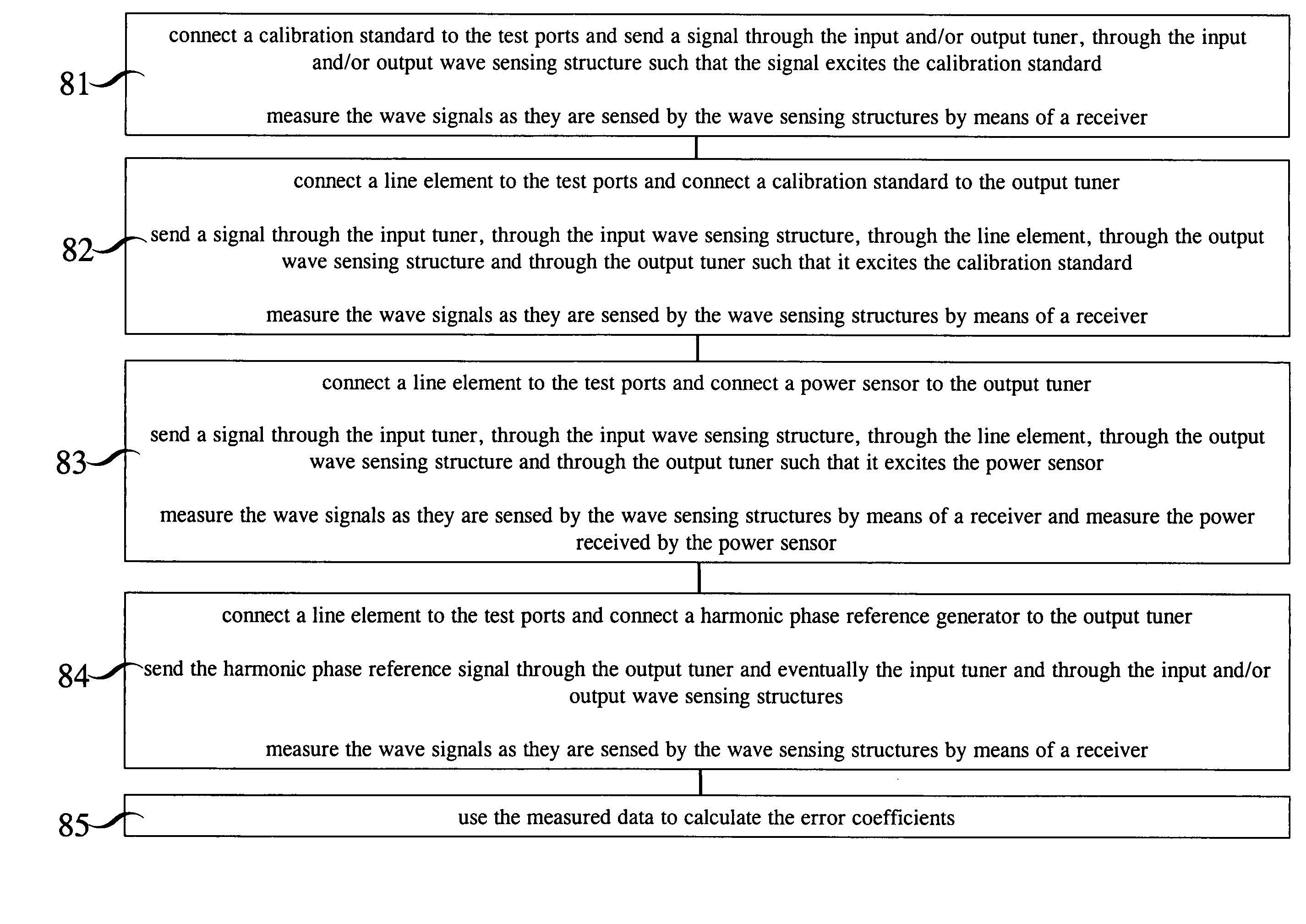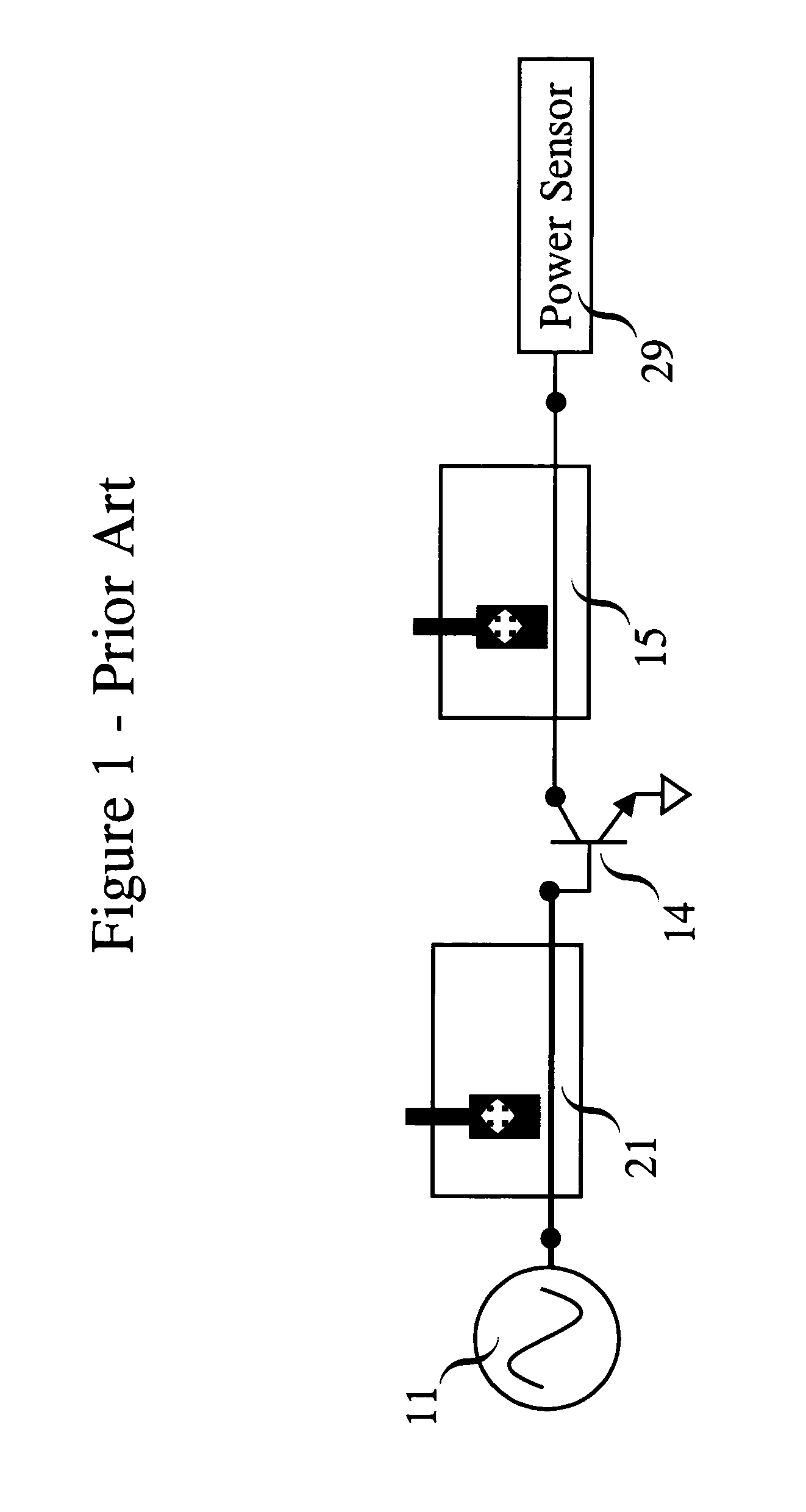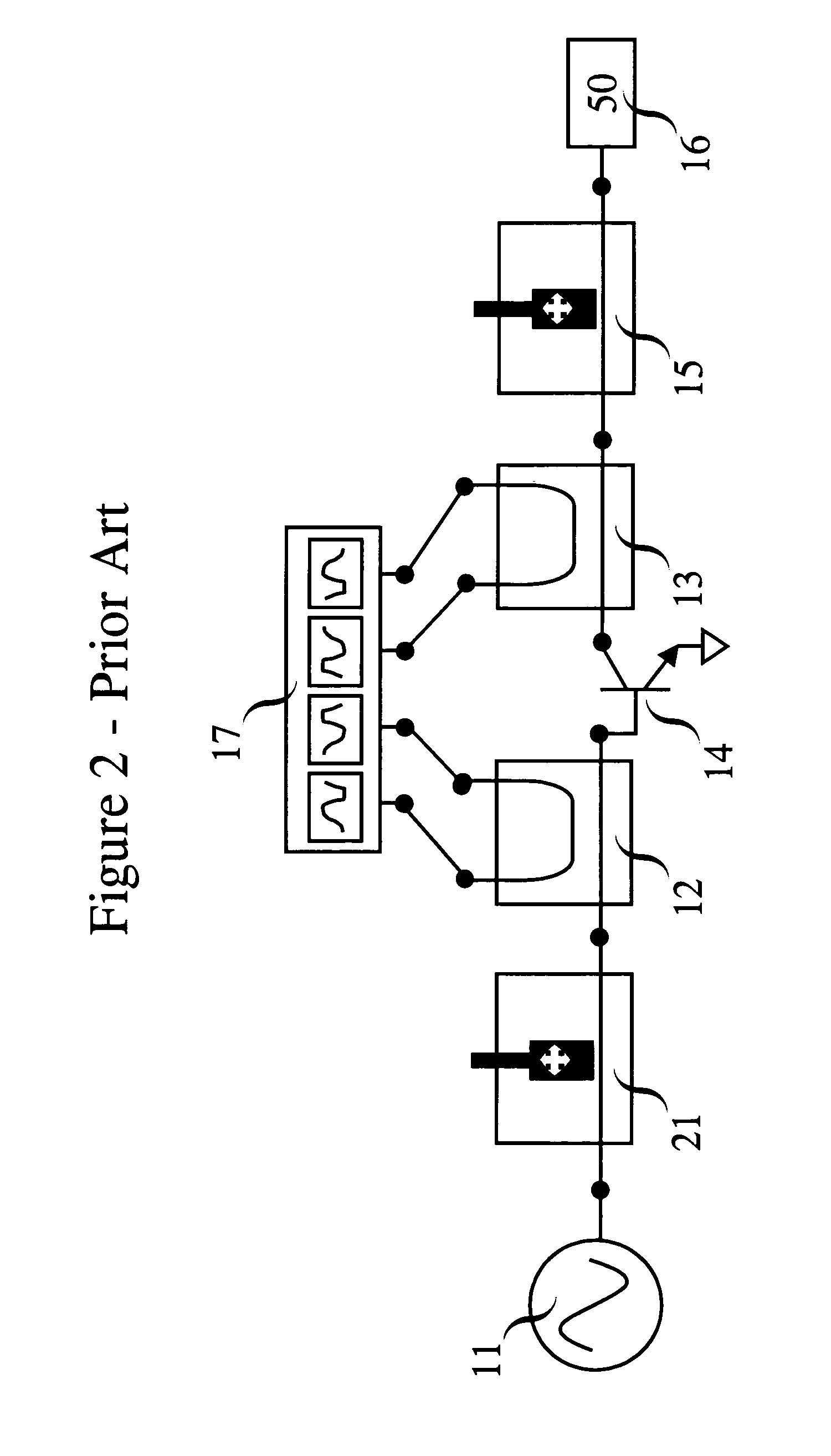Method for Calibrating a Real-Time Load-Pull System
a real-time load-pull system and real-time technology, applied in the field of incident and reflected waveform measurement, can solve the problems of significant measurement errors, high time-consuming s-parameter characterization of tuners, and the accuracy of real-time load-pull systems, so as to speed up the calibration procedure, simplify the calibration procedure of high-frequency load-pull systems, and reduce the effect of manipulation
- Summary
- Abstract
- Description
- Claims
- Application Information
AI Technical Summary
Benefits of technology
Problems solved by technology
Method used
Image
Examples
embodiment
Preferred Embodiment
[0038]The invention was publicly presented by Dr. Jan Verspecht under the title “Affordable Large-Signal Network Analyzer Technology” on Sunday Jan. 7, 2007 at the workshop “RF Power Transistor and Amplifier Characterization Techniques” during the Radio and Wireless Week 2007, Long Beach, USA. The invention is a novel calibration procedure and will be explained in the following. With the novel calibration procedure, the electromagnetic wave signals always pass through the input tuner 21 or the output tuner 15 or both the input tuner 21 and the output tuner 15 of the real-time load-pull system. This is not the case in prior art and is an important novel feature of the present invention that results in significant advantages.
[0039]First we will describe the hardware components of a real-time load-pull setup as depicted in FIG. 2. The signal source 11 is connected to the input tuner 21. The input tuner 21 is connected to the input wave sensing structure 12. The othe...
PUM
 Login to View More
Login to View More Abstract
Description
Claims
Application Information
 Login to View More
Login to View More - R&D
- Intellectual Property
- Life Sciences
- Materials
- Tech Scout
- Unparalleled Data Quality
- Higher Quality Content
- 60% Fewer Hallucinations
Browse by: Latest US Patents, China's latest patents, Technical Efficacy Thesaurus, Application Domain, Technology Topic, Popular Technical Reports.
© 2025 PatSnap. All rights reserved.Legal|Privacy policy|Modern Slavery Act Transparency Statement|Sitemap|About US| Contact US: help@patsnap.com



